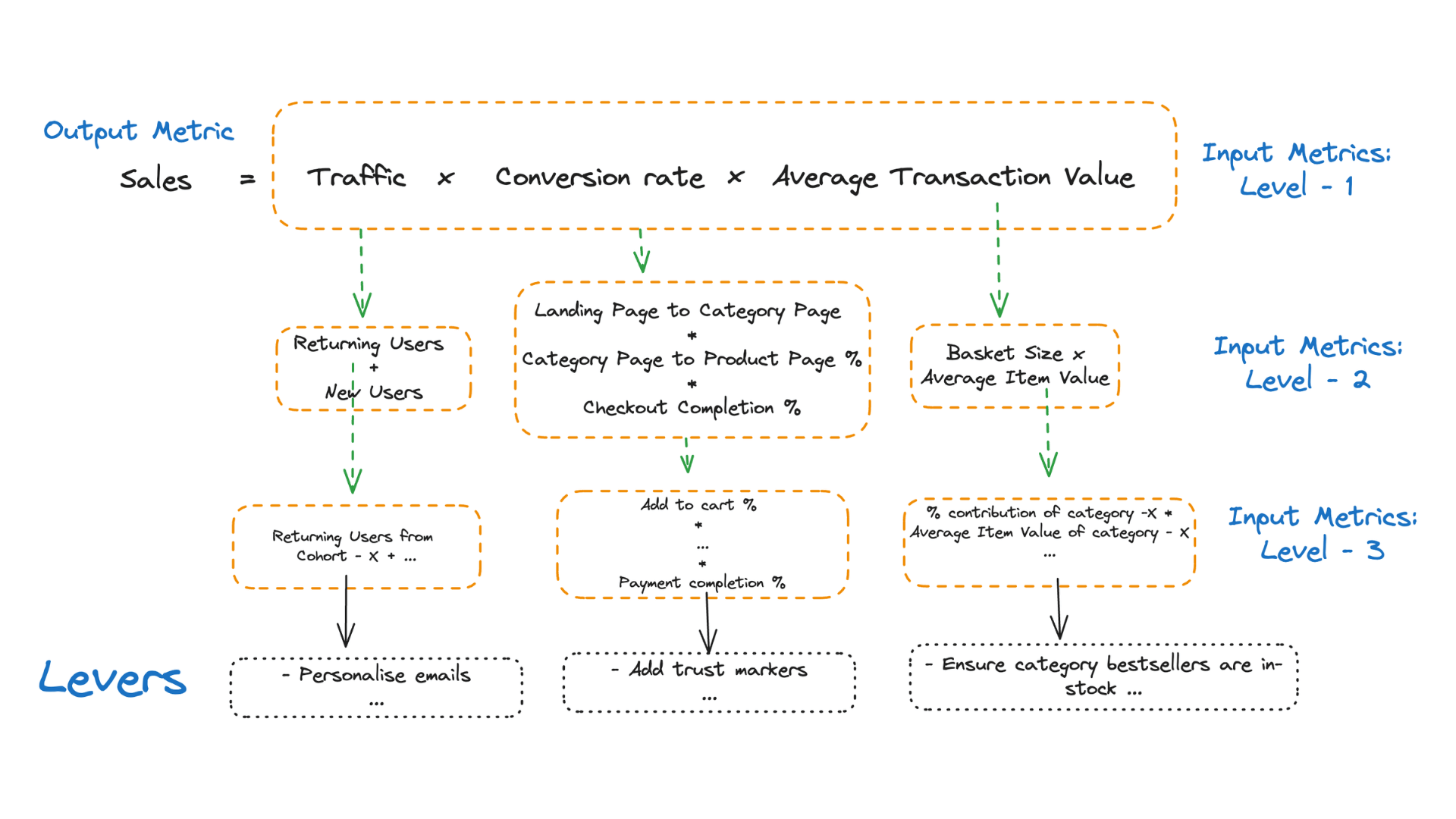What are Growth Levers?
Previously, we discussed input metrics—the measurable aspects of daily operations that directly impact business performance—and output metrics, which are the end results reflecting the overall success of a business. Building on these concepts, we now focus on growth levers.
Growth levers are specific actions designed to influence input metrics. Unlike input metrics, which are indicators we measure, growth levers are the actions we take to steer these metrics toward achieving our desired output metrics.

Example:
Consider the output metric of 'Sales', which is influenced by factors such as Traffic, Conversion Rate, and Average Transaction Value. Here’s the breakdown:
- Output Metric: Sales = Traffic x Conversion Rate x Average Transaction Value
- Input Metrics Hierarchy:
- ☞ Level 1: Traffic, including new and returning users.
- ☞ Level 2: Conversion steps like 'Landing Page to Category Page' percentage and 'Category Page to Product Page' percentage.
- ☞ Level 3: Final purchasing actions such as 'Add to Cart' percentage and 'Payment Completion' percentage.
Each level of input metrics offers several potential growth levers:
- ☞ To increase returning users, a lever could be personalizing emails.
- ☞ For improving payment completion rates, adding trust markers on the checkout page is a useful lever.
- ☞ To maximize basket size, ensuring that category bestsellers are in stock is an effective lever.
Takeaway:
The key to a successful growth roadmap -- that actually achieves the growth model projections -- is to work backwards from desired outcome metrics to different levels of their input metrics to potential growth levers.